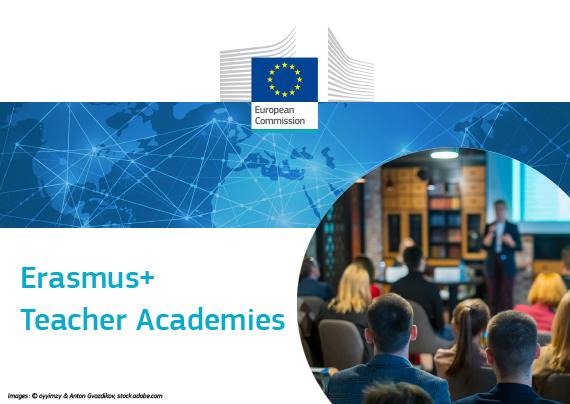Introducción al programa Erasmus+ // Introduction to the Erasmus+ Programme
Introducción al programa Erasmus+ // Introduction to the Erasmus+ Programme
En algún momento de nuestra vida casi todos hemos conocido a alguien que se ha marchado con el antiguo programa Erasmus para vivir una temporada en un país extranjero o simplemente hemos oído hablar de él. ¿Pero en qué se basa en sí mismo el programa?
El programa Erasmus fue creado en 1987 y su nombre proviene de las siglas (EuRopean Community Scheme for the Mobility of University Students) Plan de Acción de la Comunidad Europea para la Movilidad de Estudiantes Universitarios. Desde este primer comienzo el programa ha sufrido grandes cambios. En 1995 el programa se integró dentro del plan Sócrates, dónde el ámbito de sus actividades se expandió gradualmente para incluir la movilidad del profesorado y la cooperación internacional entre universidades europeas. Aunque cabe destacar que la movilidad de estudiantes sigue siendo el corazón del programa 1
Actualmente el programa se aplica en 33 países europeos y en el 90% de las universidades europeas. Aproximadamente 200 000 estudiantes viajan cada año gracias a este programa.
Como su propio nombre indica está orientado a la enseñanza superior. Tiene como principal objetivo mejorar la calidad y fortalecer la dimensión europea de la enseñanza superior fomentando la cooperación transnacional entre universidades, estimulando la movilidad en europa y mejorando la transparencia y el pleno conocimiento académico de los estudios y cualificaciones en toda la unión 2.
El último cambio que sufrió el programa fue en 2013 cuando este pasó a llamarse Erasmus+. Se enmarca dentro de la estrategia Europa 2020, en la estrategia Educación y Formación 2020 y en la estrategia Rethinking Education y engloba todas las iniciativas de educación, formación, juventud y deporte. Este nuevo programa se centra en el aprendizaje formal e informal más allá de las fronteras de la UE, con una clara vocación de internacionalización abriéndose a terceros países con el objetivo de mejorar las capacidades educativas y formativas de las personas para la empleabilidad de estudiantes, profesorado y trabajadores y trabajadoras 3.
<<La difusión y el aprovechamiento de los resultados constituyen uno de los ámbitos fundamentales del ciclo de vida del proyecto Erasmus+. Brindan a las organizaciones participantes la oportunidad de comunicarse y compartir los resultados y materiales conseguidos, lo que ampliará el impacto de sus proyectos, mejorará su sostenibilidad y pondrá de manifiesto el valor añadido europeo de Erasmus+>> 4 . Para más información visiten la web del programa de la Comisión Europea.
Introduction to the Erasmus+ Programme.
In some moment of our life we have known somebody that has joined the previous program Erasmus to live abroad or we just have heard about it. But what is the program based itself.
The program Erasmus was created in 1987 and his name comes from the initial letters (EuRopean Community Scheme for the Mobility of University Students) In 1995 the program was integrated within the Socrates plan; where its activities expanded gradually to include the mobility of the academic staff and the international cooperation between European universities. Although it is pertinent to point out that the mobility of students continues to be the heart of the program.
Actually, the program is applicable in 33 European countries and in 90 % of the European universities. Approximately 200 000 students travel every year thank to this program.
As your own name suggests it is oriented to higher education. It has like main objective to improve quality and strengthening the European dimension of higher education promoting the transnational cooperation between universities, stimulating the mobility in Europe and improving transparency and the complete academic knowledge of the education and qualifications in the whole union.
The last change that suffered the program was in 2013 when this proceeded to be called Erasmus+. It delimits within The Europe 2020 Strategy , in Education and Formation 2020 Strategy and in Rethinking Education Strategy and encompass all the initiatives of education, formation, youth and sport. This new program focuses on the formal and informal learning beyond the frontiers of the EU, with a clear vocation of internationalization opening up to third countries for the sake of improving the educational and formative capacities of the people for the empleabilidad of students, academic staff and workers and workers.
Diffusion and the use of the results constitute one of the fundamental spaces of the life cycle of the project Erasmus +. They offer the opportunity to get in touch to the participating organizations and sharing results and created materials, which will increase the impact of its projects, it will improve its sustainability and it will add European value to Erasmus+´s manifest. For more information visit the web of the program of the European Commission.
Referencias/ References
1 http://www.osu.eu/index.php?kategorie=2&id=11172
2 https://es.wikipedia.org/wiki/Programa_Erasmus
3 http://www.oapee.es/oapee/inicio/ErasmusPlus.html
4 http://ec.europa.eu/programmes/erasmus-plus/documents/erasmus-plus-programme-guide_es.pdf




